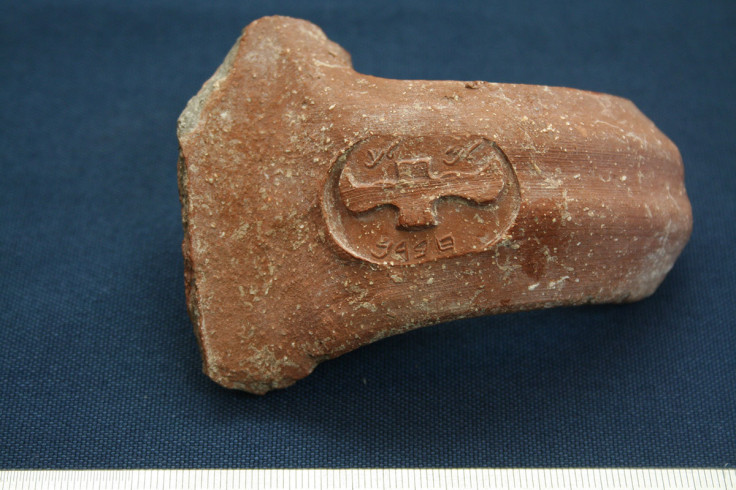Changes to Earth's magnetic field recorded in 600-year-old Judean pottery
As ceramics cooled, the magnetic minerals in them would align with the geomagnetic field.
Ancient clay jar handles can act as a record of the Earth's magnetic history, a new study finds, confirming evidence of sudden, sharp spikes in the strength of the field.
Fragments of pottery were historically stamped with an emblem of the rulers of the Kingdom Judah, which encompassed Jerusalem and nearby areas. These jars were also marked by the state of the Earth's geomagnetic field at its time of construction, offering researchers a unique chance to reconstruct the past of the Earth's magnetic field.
The study is based on the technique of archaeomagnetism. Some minerals in clay are magnetic, and before they are heated they are aligned randomly. As the pottery is heated during the firing process, the magnetic particles tend to align with the Earth's magnetic field. The stronger the magnetic field, the greater the degree of alignment in the magnetic minerals.
Using this method, archaeologists at Tel Aviv University in Israel were able to measure the geomagnetic field intensity in Judah from the 8th Century BCE to the 2nd Century BCE, publishing their results in a paper in the journal PNAS.
"The new record constitutes a substantial advance in our knowledge of past geomagnetic field variations in the southern Levant," the authors write in the paper.
They used 67 ceramic jar handles that were clearly stamped with a royal seal, allowing them to put a relatively precise date on the age of the pottery.
They found that in the late 8th Century BCE there was large spike in intensity of the Earth's magnetic field, and then a rapid decline of more than 20% of the strength of the field in just 30 years. After that, there was a much more gradual decline up until the 2nd Century BCE.

The measurement of the 8th Century BCE spike – one of two Iron Age spikes, the other happening about 200 years earlier – confirms previous research measuring such an anomaly.
"Both the 10th-century and 8th-century BCE spikes occurred during a time span of generally high field values worldwide, which appears to promote rapidly fluctuating and unstable fields," the authors write.
They suggest that using dated pottery for further archaeomagnetic research could be a promising way to approach the study of these magnetic anomalies.
© Copyright IBTimes 2025. All rights reserved.





















